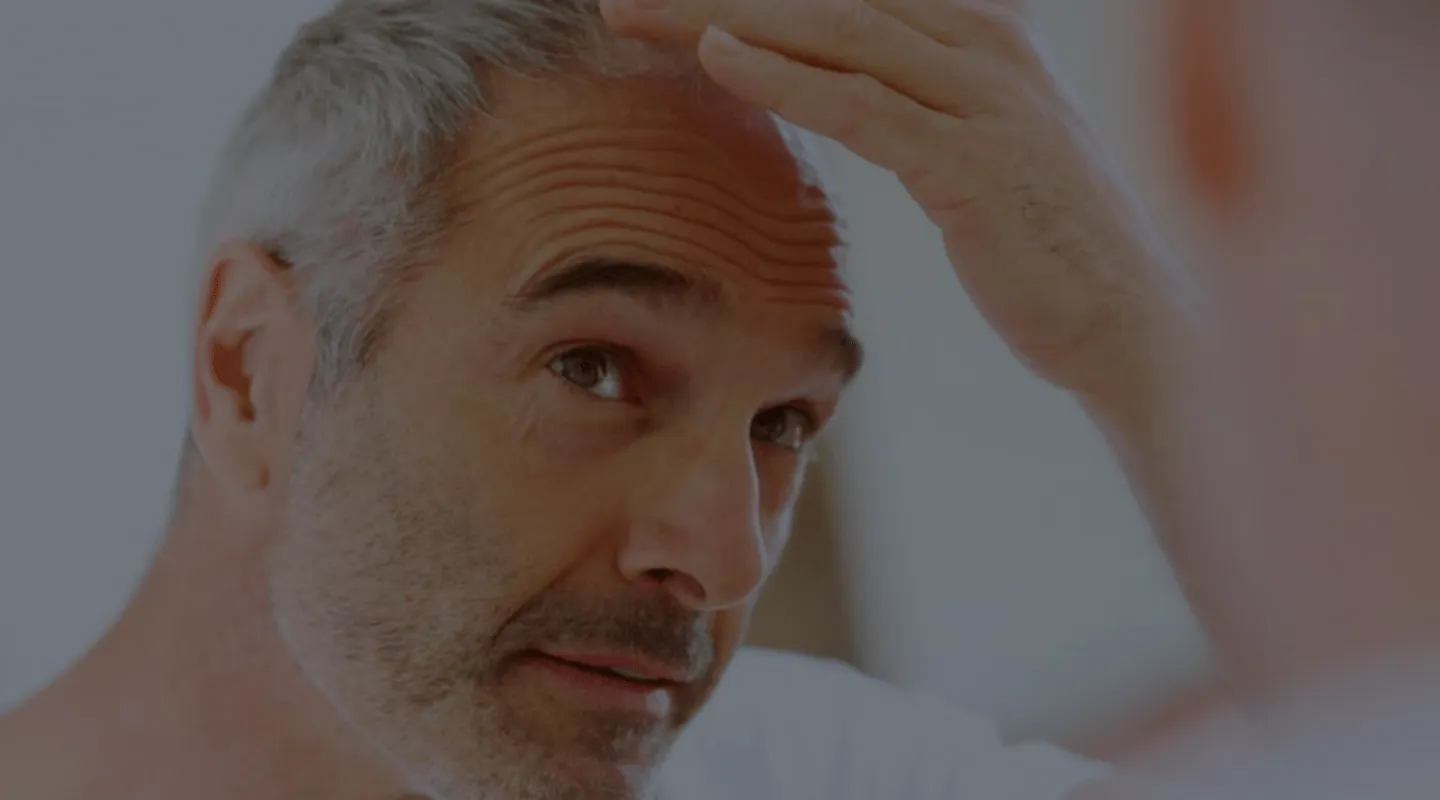
Hair Transplant
Your Hair Transplant in Tunisia at an Affordable Price
Regain a thick, natural head of hair with our FUE hair transplant, an effective and affordable solution for hair loss.
How does it work?
FUE Hair Transplant Technique: What is it?
FUE (Follicular Unit Extraction) is a hair transplant method where follicles are extracted directly from the donor area, typically where hair is resistant to balding. These follicles are then successfully transplanted to the recipient area where hair loss has occurred.
Donor areas for hair implantation
If there aren’t enough bulbs in the donor areas of the head to ensure good hair density, hair bulbs can be taken from the chest and implanted in the central area of the head.
Does FUE hair transplantation require general anesthesia?
FUE hair transplantation does not require general anesthesia. Simple local anesthesia prevents any pain during the procedure. Given the non-invasive nature of an FUE transplant, you can resume work quickly. In the case of FUE auto-transplantation, note that this procedure can take between 4 and 7 hours, depending on the amount of grafts needed to cover the area affected by hair loss. Initial results will be noticeable after about three months, with continuous improvement until the sixth month, when our patients will notice about two centimeters of hair growth which will give a perfectly natural look.
What are the causes of hair loss?
The culprit is DHT, a testosterone-derived hormone in our bodies that is converted into DHT by an enzyme. Our hair grows from bulbs, technically called follicular units. When DHT comes into contact with the bulbs and penetrates through receptors inside the follicular units, it causes their progressive shrinking, gradually reducing the thickness and length of the hair until it no longer grows back, thus leading to baldness.
The grafting technique exploits a fortunate genetic problem: some follicles present in the parietal and occipital areas are immune to the action of DHT because they do not have the receptors for this hormone. It is precisely this donor area that makes hair transplantation possible with a Tunisia FUE hair implant. Turn your dreams into reality and say goodbye to worries about baldness with our revolutionary FUE hair grafting method. No more unsightly scars and trauma from the scalpel, let your hair grow naturally and regain a radiant, healthy head of hair.
What are the advantages of the FUE (Follicular Unit Extraction) technique?
- High-quality procedure;
- No scars or stitches;
- No scalp incisions;
- Very little post-operative discomfort;
- Best final results;
- Fast healing in the donor area (15/20 days);
In the first few days after your operation, carefully follow the precautions given at the clinic. This will allow you to go through your convalescence without any discomfort. It is therefore recommended to avoid any shock or friction on the head, to limit perspiration as much as possible, and to abstain from physical exertion. This method can also be applied to men undergoing a beard or mustache transplant.
What is the price of a hair transplant in Tunisia?
By opting for a hair transplant in Tunisia, you will benefit from an excellent value for money. The average cost of such a procedure is significantly cheaper than in other European or North American countries. This difference is mainly due to lower labor costs and lower general expenses for clinics and hospitals in Tunisia. However, do not mistake this for a lower quality of care and results: thanks to the use of modern techniques and qualified professionals, you can expect satisfactory results at a competitive cost.
Your health, our priority.
Request your free quote.
How does scarless hair implantation work?
Natural results, no visible scars and a quick, painless surgical procedure: this is the FUE (follicular unit transplantation) technique, successfully used worldwide. The treatment consists of a hair implant in Tunisia. The hair grows back completely naturally. These bulbs are simply taken from a “healthy” donor area, usually at the back of the neck and on the sides of the head, i.e. parts of the scalp that are not affected by hair loss, because they belong to the person themselves. Thanks to the FUE technique, it is possible to graft beards, mustaches, eyebrows and even eyelashes. The recommended age for hair transplantation is 18 to 80 years old, you can also do it without shaving.
Alopecia
Hair transplantation in Tunisia begins with personalized planning based on the type of alopecia. During your treatment, the medical team will conduct a thorough assessment of your situation to ensure step-by-step monitoring. The first step in hair transplantation is local anesthesia of the scalp to ensure optimal comfort without any pain. By using moderate amounts of local anesthetics, we will ensure that any swelling of the scalp is avoided. Subsequently, the bulbs are collected in small groups, from 1 to 4 bulbs, by micro-grooves that collect tiny portions of skin, called “grafts”. Then, the skin affected by these collections is treated with lubricants or moisturizing lotions that accelerate hair density.
Recipient area
The extracted grafts are implanted into the “recipient” area affected by alopecia using forceps. In order for the hair follicles to adhere as much as possible, the Tunisia hair graft must be performed very quickly, but at the same time with great care, in order to place the grafts in the correct orientation, respecting the natural angle and direction.
What is the duration of the procedure?
The FUE hair grafting process is performed by a team of 2 to 3 technicians, under the supervision of a surgeon specializing in this technique. Although it is a surgical procedure, no scalpel is used and it does not cause any scars or marks on the scalp. The duration of the operation can vary from 4 to 7 hours depending on the number of grafts required to cover the area affected by baldness.
Post-operative care
A strip is applied to the donor area that gradually releases soothing substances, which help the skin to regenerate. The bandage should be worn for 2 to 3 days. The micro-perforated areas heal in a few days. In their place, on the basis of the transplanted bulbs, small scabs appear which leave in one week.
When can the patient return to normal work?
After 24 hours, the patient can return to normal work.
What are the complications after FUE hair implantation?
It is very rare for complications to occur after FUE hair implantation: in the following period, small swellings or discomfort may occur, which disappear in a few weeks. In the meantime, you can resume normal daily activities.
When will the first results be visible?
The first results will be evident after a short time. Indeed, hair regrowth occurs from the third month to 5/6 months where each of our patients will be able to appreciate their hair of about two centimeters. Moreover, the result of the hair transplant is definitive and permanent.
What is the success rate of FUE hair grafts?
The modern approach to hair restoration leaves minimal scarring, and 98% of people will have a successful hair graft treatment. The most innovative hair restoration treatment on the market is the FUE hair transplant, with remarkable and natural results compared to other treatments. The grafted hair will continue to grow for years, but with age, some people may experience new hair loss, which may require a supplementary graft to regain optimal hair density.
Hair Transplant After One Year
You can expect to achieve the desired results 12 months after a hair transplant. The donor and transplanted areas are almost 100% healed at this stage. You can now confidently enjoy a full head of healthy, strong hair. You may like to style your new hair as you wish and use any styling product without worry.
How to sleep after an FUE hair transplant?
For a few nights after your procedure, you should sleep with your head elevated using a towel underneath.
Will I need to take time off work after an FUE hair transplant?
This depends on the type of work you do – if you don’t have a physically demanding job, medically you can return to work after just a few days if you feel comfortable. For people with more physical jobs, it is necessary to take at least a week off. When considering scalp surgery, it is imperative to remember that redness and scabs will appear during the weeks following the procedure. Even if you can conceal these effects by wearing a hat, I personally recommend not disclosing your operation. Allow for a longer recovery period for optimal aesthetic results of your post-operative scalp.
Our advantages


How long does the pain last after an FUE hair transplant?
For most patients, pain after hair implantation will vary. It may last only a few days after the procedure, but may extend to a full week. The number of grafts transplanted can also influence the level of discomfort felt. In the case of larger surgeries, the healing period will be longer, therefore resulting in a feeling of pain for a longer period.
Are all patients suitable for an FUE hair transplant?
The short answer is no, not everyone is suitable for FUE. In our experience, most patients could potentially undergo hair implantation to some extent. However, a number of factors come into play when it comes to a good hair transplant. You must have enough good donor hair for a successful graft. We ensure that you have enough donor hair not only to give you amazing results, but also to ensure that you have the possibility of having more hair grafted, if you need it in the future.
Contact and request a quote for a hair transplant
Our team is always at your disposal to assist and guide you through all the procedures for a hair transplant in Tunisia. If you wish to have your Tunisia hair implant with a serious and experienced agency, trust the professionals of Tunisia Destination Santé. We are by your side step by step in the completion of your file and the arrangement of your stay. Do not hesitate to contact us for more information and request a free quote without obligation.
—
Frequently Asked Questions
One of the rare but relevant concerns is the pain associated with FUE hair transplantation. In general, the procedure only requires local anesthesia, minimizing pain during the procedure. However, some patients may experience slight discomfort during and after the procedure. Sensations vary from person to person, but most patients describe the pain as tolerable and comparable to that felt during a simple visit to the dentist.
Post-operative infections are rare but possible. To minimize this risk, follow the post-operative care instructions provided by the surgeon. This includes maintaining good hygiene, using prescribed medications and avoiding certain activities that could expose the treated areas to bacteria. Furthermore, by choosing a reputable clinic and an experienced surgeon, the risk of infection is significantly reduced.
Many wonder if it is possible to dye their hair after an FUE transplant. As a general rule, it is necessary to wait at least 4 to 6 weeks before dyeing the hair. This allows the grafts to settle properly and heal without being exposed to potentially irritating chemicals contained in hair dyes.
Although FUE hair transplantation has a high success rate, there are cases where the results do not meet expectations. Several factors can influence the success of the graft, including the quality of the grafts, the surgeon’s skill, and post-operative care. It is therefore necessary to discuss realistic expectations in detail with the surgeon before the procedure.
The final results of an FUE hair transplant are not immediate. The transplanted hair often falls out in the first few weeks after the procedure, then begins to regrow after a few months. Full and final results can take between 12 and 18 months to become visible. Note that this period of progressive growth allows the hair to look natural and well integrated with the rest of the hair.
Avoid strenuous physical activity for at least 2 to 3 weeks after an FUE hair transplant. Physical exercise can increase the risk of bleeding and infection, and sudden movements can affect the newly implanted grafts. Consult your surgeon for personalized advice on resuming sports activities.
FUE hair transplantation is just as effective in women as it is in men. Therefore, women suffering from hair loss due to genetic, hormonal or traumatic factors can benefit from this technique. However, a detailed assessment by a professional is necessary to determine if FUE is the best option, as the causes and patterns of hair loss can vary significantly between the sexes.
